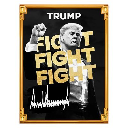 |
|
 |
|
 |
|
 |
|
 |
|
 |
|
 |
|
 |
|
 |
|
 |
|
 |
|
 |
|
 |
|
 |
|
 |
|

Large concept models (LCMs) offer some exciting prospects. In today’s column, I explore an intriguing new advancement for generative AI and large language models (LLMs) consisting of moving beyond contemporary words-based approaches to sentence-oriented approaches.
The extraordinary deal is this. You might be vaguely aware that most LLMs currently focus on words and accordingly generate responses on a word-at-a-time basis. Suppose that instead of looking at the world via individual words, we could use sentences as a core element. Whole sentences come into AI, and complete sentences are generated out of AI.
To do this, the twist is that sentences are reducible to underlying concepts, and those computationally ferreted-out concepts become the esteemed coinage of the realm for this groundbreaking architectural upheaval of conventional generative AI and LLMs. The new angle radically becomes that we then design, build, and field so-called large concept models (LCMs) in lieu of old-fashioned large language models.
Let’s talk about it.
This analysis of an innovative AI breakthrough is part of my ongoing Forbes column coverage on the latest in AI including identifying and explaining various impactful AI complexities (see the link here). For my coverage of the top-of-the-line OpenAI ChatGPT o1 and o3 models and their advanced reasoning functionality, see the link here and the link here.
There is an ongoing concern in the AI community that perhaps AI researchers and AI developers are treading too much of the same ground right now. We seem to have landed on an impressive architecture contrivance for how to shape generative AI and LLMs and few want to depart from the success so far attained.
If it isn’t broken, don’t fix it.
The problem is that not everyone concurs that the prevailing architecture isn’t actually broken. By broken — and to quickly clarify, the issue is more of limitations and constraints than it is one of something inherently being wrong. A strong and vocal viewpoint is that we are hitting the topmost thresholds of what contemporary LLMs can accomplish. There isn’t much left in the gas tank, and we are soon to hit a veritable wall.
As such, there are brave souls who are seeking alternative architectural avenues. Exciting but a gamble at the same time. They might hit the jackpot and discover the next level of AI. Fame and fortune await. On the other hand, they might waste time on a complete dead-end. Smarmy cynics will call them foolish for their foolhardy ambitions. It could harm your AI career and knock you out of getting that sweet AI high-tech freewheeling job you’ve been eyeing for the longest time.
I continue to give airtime to those who are heads-down seriously aiming to upset the apple cart. For example, my analysis of the clever chain-of-continuous thought approach for LLMs merits dutiful consideration, see the link here. Another exciting possibility is the neuro-symbolic or hybrid AI approach that marries artificial neural networks (ANNs) with rules-based reasoning, see my discussion at the link here.
There is no doubt in my mind that a better mousetrap is still to be found, and all legitimate new-world explorers should keep sailing the winds of change. May your voyage be fruitful.
The approach I’ll be identifying this time around has to do with the existing preoccupation with words.
Actually, it might be more appropriate to say a preoccupation with tokens. When you enter words into a prompt, those words are converted into numeric values referred to as tokens. The rest of the AI processing computationally crunches on those numeric values or tokens, see my detailed description of how this works at the link here. Ultimately, the AI-generated response is in token format and must be converted back into text so that you get a readable answer.
In a sense, you give words to AI, and the AI gives you words in return (albeit via the means of tokenization).
Do we have to do things that way?
No, there doesn’t seem to be a fundamental irrefutable law of nature that says we must confine ourselves to a word-at-a-time focus. Feel free to consider alternatives. Let your wild thoughts flow.
Here is an idea. Imagine that whole sentences were the unit of interest. Rather than parsing and aiming at single words, we conceive of a sentence as our primary unit of measure. A sentence is admittedly a collection of words. No disagreement there. The gist is that the sentence is seen as a sentence. Right now, a sentence happens to be treated as a string of words.
Give the AI a sentence, and you get back a generated sentence in return.
Boom, drop the mic.
Making sense of sentences is a bit of a head-scratcher. How do you look at an entire sentence and identify what the meaning or significance of the sentence is?
Aha, let’s assume that sentences are representative of concepts. Each sentence will
免責聲明:info@kdj.com
所提供的資訊並非交易建議。 kDJ.com對任何基於本文提供的資訊進行的投資不承擔任何責任。加密貨幣波動性較大,建議您充分研究後謹慎投資!
如果您認為本網站使用的內容侵犯了您的版權,請立即聯絡我們(info@kdj.com),我們將及時刪除。
-

- 隨著預發行市場壓力的增加
- 2025-04-03 11:35:26
- Doge和Ada最近經歷了顯著的價格下跌。 MUTM令牌在其4階段預售期間可用,價格為0.025美元。
-

- 標準特許在雪崩(Avax)上的覆蓋範圍,前往2029年$ 250
- 2025-04-03 11:35:26
- “關稅噪音的一個正面是,它使我們有機會重新設置並為下一個數字資產價格上漲的獲勝者選擇贏家。”
-

- REMITTIX(ADA)價格趨勢今年具有傑出的潛力
- 2025-04-03 11:30:12
- Cardano(ADA)價格趨勢今年具有傑出的潛力,個人詢問Sermittix是否可以加入2025年的繁榮。
-

-

- 美國股票在特朗普揭幕“解放日”關稅之前結束了較高的一天
- 2025-04-03 11:25:12
- 標準普爾500指數上漲了0.7%,因為早期損失為1.1%,較晚的增長1.1%。本週開放的模式和尖銳的滴劑
-

- 彈弓:Roblox上區塊鏈遊戲的未來
- 2025-04-03 11:25:12
- Slingshot是一個啟動遊戲,它可以涉足這一轉變,專門針對在Roblox生態系統中提供區塊鏈供電的體驗。
-

-

- 特斯拉錯過了Q1送貨號
- 2025-04-03 11:20:13
- Zacks排名第3(持有)Tesla(TSLA)下降26%。同時,在政治強烈反對的情況下,股票遍布40%以上,減緩了電動汽車需求
-

- Ruvi AI用區塊鏈功率革新AI的可訪問性
- 2025-04-03 11:15:12
- Ruvi AI通過將最先進的人工智能納入社區驅動的區塊鏈生態系統來打破新的基礎。




























































